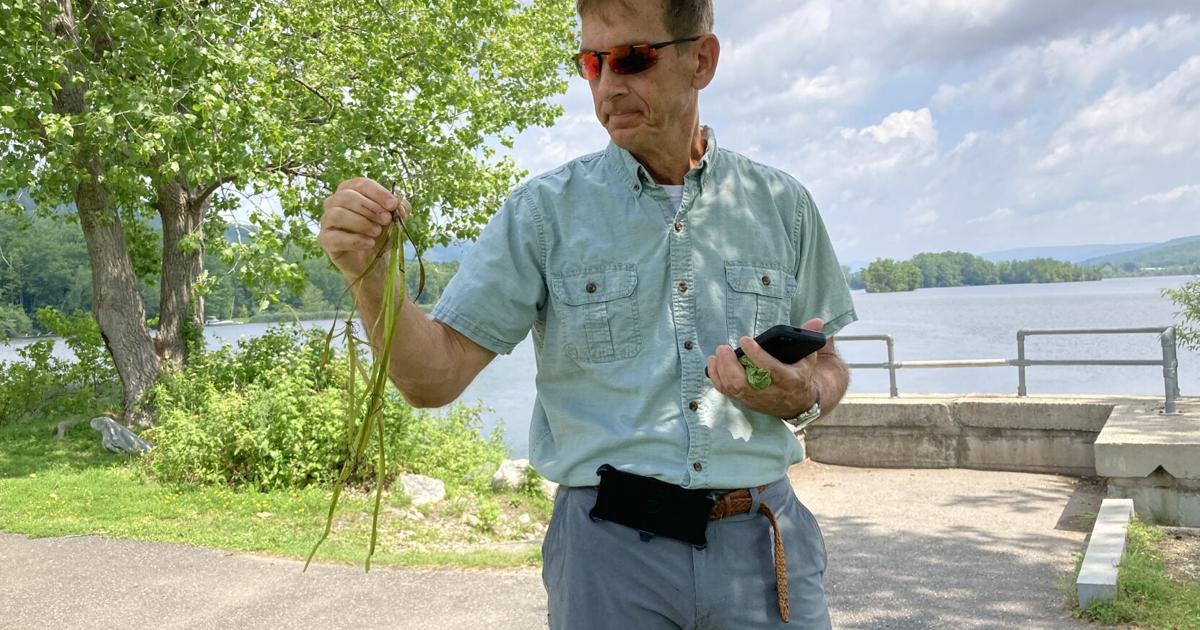CHESHIRE — Got a use for vallisneria, also known as tape grass or eel grass?
Well, the people who live on the 300-acre north basin of Cheshire Reservoir don’t either.
The just over 100 landowners whose houses ring the north basin are responsible for controlling the weeds in the state-owned lake, which actually stretches to 500 acres, if you include the middle and south basins.
In preparation for summer’s arrival, the north basin has gone through two applications of chemicals (brand names Sonar and Diquat) in May and June. Both of these were targeted applications.
“We’re adjusting obviously downward as much as possible both the number of chemicals and the amount of chemicals,” said Sean Lydon, chair of the Prudential Committee of the Hoosac Lake Preservation/Recreation District, referring to treatments that are mostly copper-based. “This is decades-old technology. Unfortunately, there’s not a lot of new research in lake weed control.”
The volunteer, three-member Prudential Committee has managed Eurasian milfoil effectively over the years, Lydon said, but even so, things change.
“Nature just keeps changing the challenge that we have to try to maintain the lake going forward for generations,” he said.
Last year’s hot and dry spring helped weeds in the lake flourish. This year’s cool and rainy spring suppressed that growth to a degree, meaning less of the chemicals were needed in the zoned application.
But autumn leaves and weeds in the lake have created a rich compost that’s about 2 feet deep at the bottom of the lake.
“The weeds grow fantastically in the sediment,” Lydon said. “The natural hard bottom of the lake would be a natural deterrent.”
Now, vallisneria, the newest invasive at the spring-fed lake, has been growing up to 5 feet long. It doesn’t respond to the chemicals used to manage other invasives.
Harvesting — think mowing — keeps vallisneria in check, but doesn’t kill it. There are really only two ways to get rid of it permanently: pull it or dredge the lake and let it dry up.
Neither solution is attractive to the Prudential Committee because of prohibitive cost and loss of recreational use.
About 70 percent of the district’s annual budget of about $70,000 is spent on weed control.
A $50,000 state grant will pay for engineering and permits, and harvesting and dredging, probably in 2027.
Wintertime dredging would preclude snowmobiling, skiing and ice fishing. Dredging at other times will limit fishing, boating and swimming.
“We have that broad mission to look after the care and conservation of the north basin,” Lydon said, referring to the 1994 legislative charter. “We’re monitoring the overall health of the water that flows in and the opportunity for recreational activities, especially boating and fishing.”
Lydon takes a rational approach.
“This is not a natural water body, and we’re constantly bringing things in,” he said. “Any water body with migratory birds has non-native, invasive species. There’s just no way to get around it.”
While Lydon spoke, a male bald eagle dove for a fish and a female winged by. A nesting pair is living on one of the reservoir’s islands. A great blue heron also flew by.
“Now we have predatory birds fighting over the ability to fish here,” he said. “They’ve pushed out all the hawks, even their own young.”
Ospreys do drop by, but don’t stay for long, Lydon said. The reservoir has beavers, muskrat and otters as well.
Cheshire Reservoir is a popular spot to boat, fish and swim in the summer and to cross-country ski, snowmobile and ice fish in winter. The Ashuwillticook Rail Trail runs up the east side of the reservoir.
Even on weekdays, people fish and picnic during the summer.
Lydon said swimmers often encounter cold areas.
“And you’ll know you’re over where Mount Greylock is pumping fresh water into the lake,” he said.
This season, the town of Cheshire moved the kayak launch from South State Road near the lake’s northern tip to Farnams Causeway on the southern end of the north basin.
“If you were here yesterday or on Saturday, you would have seen people tubing,” he said. “We have tons of kayakers.”
The reservoir, also known as Hoosac Lake, was created in the late 1860s to feed the paper mills in Adams.
“If you’ve ridden north on the trail, you can kind of see what the origins of this was,” he said, describing it as a “swampy marsh with a brook running through it.”
That brook is actually the south branch of the Hoosic River, one of the rare rivers in New England that flows south to north.
Lydon credited state Rep. John Barrett III, D-North Adams, for his support.
Lydon has been spending summers at Cheshire Reservoir since 1966. Now, he lives at what was their lakeside property. He also credited the other two members of the Prudential Committee, Liseann Karandisecky and Edward Bassi, for their efforts.
“Myself, Liseann and Ed all grew up here as kids,” Lydon said. “Our kids grew up on this lake, and we want to make sure our grandkids have just as much fun as we did.”
